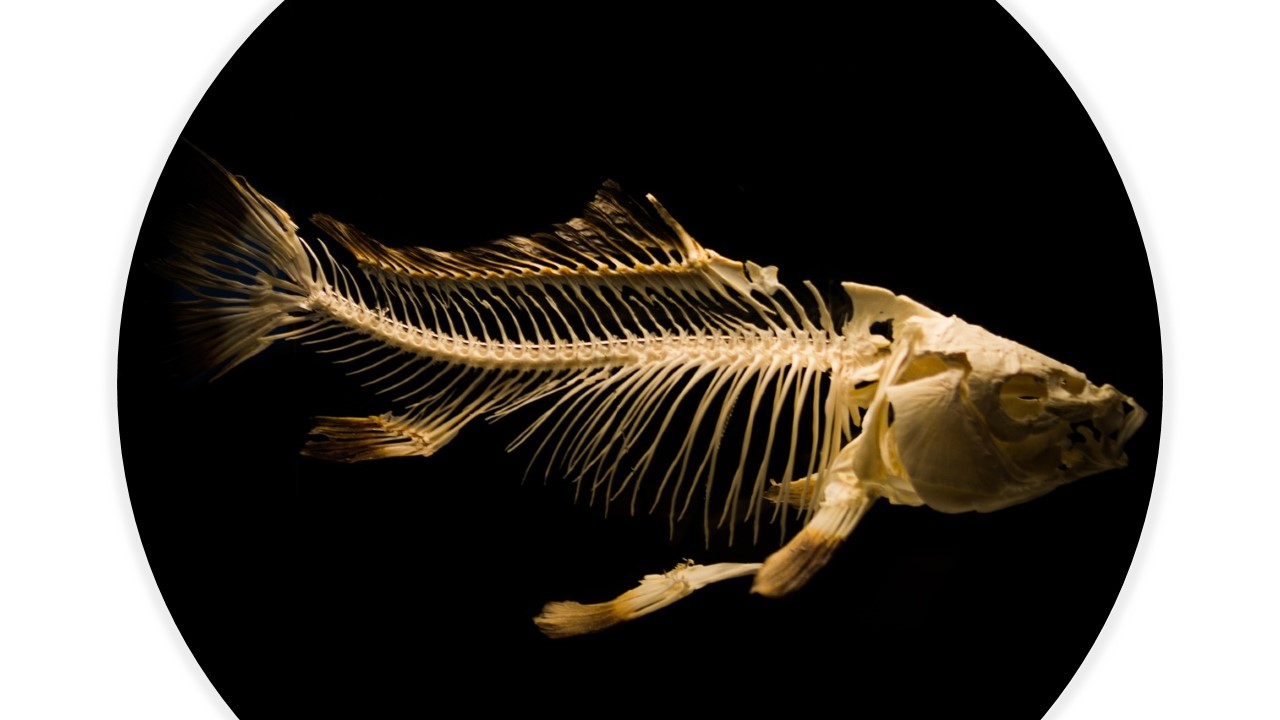Physical Address
304 North Cardinal St.
Dorchester Center, MA 02124
Physical Address
304 North Cardinal St.
Dorchester Center, MA 02124


Yes, fish have bones skeleton or cartilage. The head, trunk, and tail of a fish are the three main body parts, though these divisions are not always apparent from the outside. There are two varieties of skeletal structure exoskeleton (external structure) and endoskeleton (internal structure). A fish’s skeleton system is made up of numerous tiny bones. There are about 150 bones in the skeletal system. The connective tissue around the bones is stiffer and thicker.
There are two different kinds of vertebrate fish. This is an interesting point to make because it affects how fish’s skeletons are made up. The “bones” of certain fish are made of normal bone, while other fish are constructed of cartilage. I know that you know what bones are, but you may be asking what are cartilaginous?
Fish classified as cartilaginous have a cartilage-based skeleton as opposed to a bone-based one. These fish are able to reach quite enormous sizes because the cartilage is strong and flexible and offers adequate structural support. Fish with cartilage are all sharks, skates, and rays, including the southern stingray. These fish are all members of the elasmobranch fish family.
Along with having different skeletons, cartilaginous fish have gills that open to the ocean through slits as opposed to the bone covering found in bony fish. Different shark species may have varying numbers of gill slits.
Additionally, rather than using their gills, cartilaginous fish may breathe through spiracles. All rays, skates, and certain sharks have miracles on top of their heads. The fish can breathe without breathing in sand because of these apertures, which enable them to lay on the ocean floor and pull oxygenated water into the top of their heads.
The skin of a cartilaginous fish is covered in placoid scales, also known as dermal denticles. This resembles teeth as opposed to the flat scales seen on bony fish (also known as ganoid, ctenoid, or cycloid).
Sharks, skates, rays, and chimaeras have skeletons that are predominantly formed of cartilage rather than bone, setting them different from other jawed vertebrates.
The answer is yes, catfish do have bones. Something to know, when we cook catfish we just remove the backbone and ribs bones.
Jellyfish don’t have bones, heart, brain, or eyes. They have a smooth, bag-like body and small stinging cells on their tentacles. These amazing invertebrates shock or paralyze prey with their stinging tentacles before consuming it.
Blobfish have fragile bones, few muscles, and no swim bladder. Swim bladder is an internal organ filled with gas that most bony fish use to manage their ability to stay afloat in water.
Seahorses have an exo-skeleton, unlike the majority of fish they have fleshy coverings over hard, external, bony plates that make up their bodies. Scales are absent from them.
I hope it is much simpler for you to comprehend and tell the difference between these 2 types of fish species now. So, most of the fish have bones but they differ in their type. The skeleton of a cartilaginous fish is made up of cartilage, whereas that of a bony fish is entirely composed of bones.
You may be interesting in reading this post next: Do Fish Fins Grow Back?